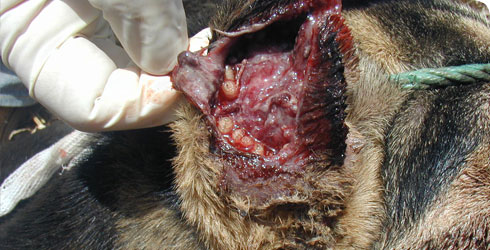Conservation
Conservation status
It is remarkable that this species manages to keep sufficient population numbers to maintain its distribution in spite of major efforts made by the livestock industry to reduce its numbers by repeated use of insecticide prophylaxis or treatments throughout the summer period.
Trends
Populations are probably stable, but there is considerable potential for long term expansion of this thermophilic species within central and northern Europe if even the conservative trends for global warming are realised.
Procedures
There are a number of prophylactic applications or treatments for this species (Hall and Farkas, 2000; Sotiraki et al., 2003, 2005ab)
Threats
The major threat to this species is anthropogenic in the form of a battery of insecticides that are applied to host animals to kill larvae.
Legislation
None presently, but there is potential for future inclusion of W. magnifica as a Category B pest in the International Office of Epizootiology’s Animal Health Code, which would necessitate livestock trading countries following advised procedures for control of its movement.
